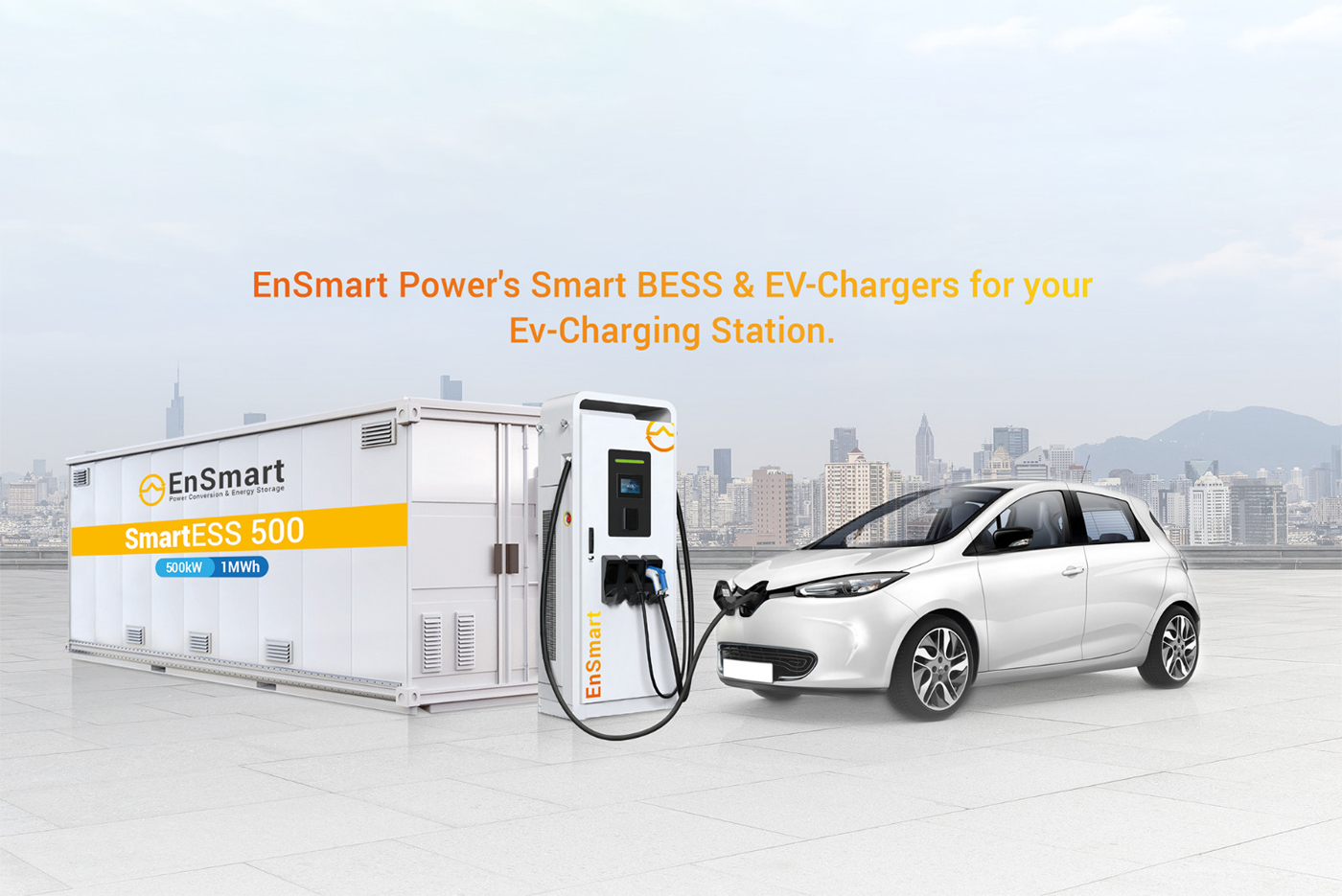ENERGY STORAGE
What is Peak Shaving and How Does it Work?
Peak shaving, also known as load shedding or load shaving is a strategy used for reducing electricity consumption during peak demand periods.
The goal is to lower the overall demand on the electrical grid during specific times when consumption is at its highest, usually during peak hours such as in the office when everyone is using appliances like air conditioners or heaters at the same time for example or when in the local company you know exactly your peak hours and days production, you can manage your electrical consumption bill and save money.
Peak shaving is a strategy that allows companies to lower their energy prices by reducing consumption on the five peak days of the year that are used to determine capacity and transmission prices. These factors can account for nearly 40% of your electricity price. However, if you take a strategic approach, you can avoid higher capacity and transmission costs and lower your bills for the future.
Many companies do not realize that they can save money by being smarter about how and when they use electricity. You can lower your energy bill, but you need to know more about how your energy provider calculates your costs to understand how you can cut costs. There's more to your energy bill than just the cost of consumption. Take a closer look at your energy bill and discover the practice that can help you benefit from lower payments — peak shaving. Peak Shaving can help to avoid or mitigate issues such as grid congestion, high electricity prices, and the need for additional infrastructure.
Peak Shaving vs Load Shifting
Peak Shaving
Peak shaving is a method of reducing power consumption by quickly and temporarily shedding loads to prevent a surge in energy use during peak hours. This technique is particularly useful for commercial and industrial facilities that require high demand energy to run their operations. By using peak shaving, these facilities can avoid peak demand charges and reduce their overall electricity costs.To implement peak shaving, a facility can temporarily reduce energy consumption by scaling down production or activating an on-site power generation system. Another option is to rely on a backup battery to provide power during peak hours. This technique not only helps to reduce energy costs but also ensures reliable power supply during times of high demand.
Overall, peak shaving is an effective energy management technique that can help consumers save money and reduce their carbon footprint.
Load Shifting
Load shifting is a technique used by power consumers to manage their electricity consumption and reduce costs. It involves reducing electricity use temporarily, followed by an increase in production at a later date when power costs or grid demand is lower. This is typically achieved by using dedicated generators or electricity storage systems, which can be charged during periods of low cost or low demand, and then used to power consumption during periods of high cost or high demand. Once output finally catches up, these methods become less significant, but they offer a reliable way to manage electricity usage and reduce overall costs.Peak Shaving With BESS
Peak shaving is a demand-side management strategy that involves reducing electricity consumption during peak periods when demand charges are in effect. This approach involves deploying energy storage systems to store excess electricity during periods of low demand and then discharging it during periods of high demand.
Load Shifting With BESS
Load shifting also known as demand shifting, involves the redistribution of electricity consumption patterns by shifting the timing of energy usage from periods of high demand to periods of low demand.
Battery Energy Storage Systems (BESS) are commonly used to implement load-shifting strategies to reduce demand charges by charging during off-peak hours and discharging during peak hours to smooth out demand spikes.

The Benefits of Peak Shaving
There are many benefits to implementing peak shaving strategies, including:Peak Shaving Cost Savings
Peak shaving can provide significant cost savings for businesses and organizations with high peak demand charges. These charges are based on the highest level of electricity use during a billing period, regardless of how much electricity is used overall. By reducing peak demand, businesses can avoid or reduce these charges, leading to lower overall electricity bills.Demand Charges
Every company’s electricity bill has two parts: the consumption charges and the demand charges. Having a better understanding of demand charges is what will help you make the most of your peak shaving.Demand charges are fees assessed by electric utilities based on the highest level of electricity use (measured in kilowatts) during a specific period, typically 15 or 30 minutes, within the billing cycle. This is in contrast to consumption charges, which are based on the total amount of electricity consumed over the entire billing period.
Example: Suppose your highest 15-minute peak demand during the month was 20 kW, and the peak demand charge rate for that interval is $5 per kW. Your demand charge would be:
Demand Charge = Peak Demand * Demand Charge Rate
Demand Charge = 20 kW * $5/kW = $100
Demand charges can be a significant portion of an electricity bill, especially for businesses that use a lot of power at once. For example, a factory that uses a lot of heavy machinery might have a high demand charge, even if its overall energy consumption is not that high.
There are several ways to reduce demand charges, such as:
Shifting loads to off-peak hours: By using less power during peak periods, businesses can reduce their demand charges. This can be done by scheduling energy-intensive activities for off-peak hours, or by using equipment that has lower standby power consumption. Installing energy-efficient equipment: Upgrading to more energy-efficient equipment can help to reduce both demand and energy charges.
Participating in demand response programs: Some utilities offer demand response programs that pay businesses to reduce their power use during peak periods.
How to Practice Peak Shaving in Your Business?
The goal of practice peak shaving is to reduce electricity consumption and save money on your company's electricity bill. You need to identify exactly your company’s electricity Peak Times and if possible implement an Energy Management System to control automatically consumption during peak hours. So, here are some of the ways you can participate in energy peak shaving to keep your demand charge low on your utility bill.1. Renewable Energy Sources As Backup Power:
Renewable energy sources can play a significant role in peak shaving strategies, offering several advantages. Renewable sources like solar and wind can generate electricity during these periods, reducing reliance on the grid and lowering costs. Solar Panel during peak hours (often coinciding with sunny periods), solar energy can directly offset grid demand, alleviating strain on traditional power plants. While wind is less predictable than sunlight, strategically located wind farms can contribute to peak shaving, especially in regions with consistent daytime winds.2. Battery Storage Systems:
Battery systems are like emergency generators in that they provide an alternative power source. A big advantage of a battery-powered system is that you can recharge the batteries when they are not needed. So, you can be sure that you have power the moment you need it. You can even program your battery-powered system to turn on as soon as your power consumption reaches a peak period. This allows you to focus more on the tasks at hand and worry less about whether your energy consumption will skyrocket. Your batteries can cover the top end of your power consumption, keeping the rest of your systems working as usual and your consumption costs low.3. Better Energy Efficiency:
Another way for companies to respond to demand is to strive for better energy efficiency. If you can track your energy consumption over time, you can see where and when you use the most energy and determine how you can reduce consumption. In some cases, you can even enlist the help of a professional to learn how you can save energy. For example, you can give training to employees on energy efficiency utilisation that’s to say train them to save on energy where and when they can to improve your effective energy-saving plan that you implement businesswide. Also eenhance your equipment, employing outdated and inefficient machinery may result in higher energy costs.Opting for modern equipment can lead to savings on both your demand charge and consumption charge.
Find Out If Your Business is Suitable For Peak Shaving
Peak shaving is a strategy for reducing or shifting electrical loads during periods of peak demand, helping to avoid or minimize peak load demand. There are different types of loads that are suitable to peak shaving, depending on the specific characteristics of the facility and its energy consumption. Here are some types of loads that are commonly eligible for peak shaving:Electric Vehicle (EV) Charging Station: Smart charging systems for electric vehicles can be programmed to avoid peak demand times. This allows for the charging of EVs during periods when overall electricity demand is lower.
HVAC Systems: Heating, ventilation, and air conditioning (HVAC) systems often contribute significantly to peak demand. Especially during the coldest or hottest period, peak shaving system can be used to reduce electricity consumption during peak demand through energy storage.
Industrial Processes: Certain industrial processes can be adjusted or scheduled to run outside peak hours. For example, production processes that involve heating or cooling can be shifted to times when overall electricity demand is lower. Examples could include manufacturing processes, data centers, chemical companies...
Contact EnSmart Power to find out more about how you can reduce your energy bill.
Peak shaving is a strategy used for reducing electricity consumption during peak demand periods. To be successful with Peak Shaving, you must be willing and able to conserve energy when necessary. You also need to be able to know the moments of highest energy consumption in your business.EnSmart Power can predict the days and times of highest energy consumption with impressive accuracy, help you successfully avoid power spikes and enable you to pay no more than necessary for your electricity bill.
If you want to lower your energy bills for your company and sustain green energy don’t hesitate to contact sales@ensmartpower.com. We offer comprehensive solutions ( Solar Panels, Battery Storage Systems and Wind turbines) to practice easily your peak shaving strategy.







